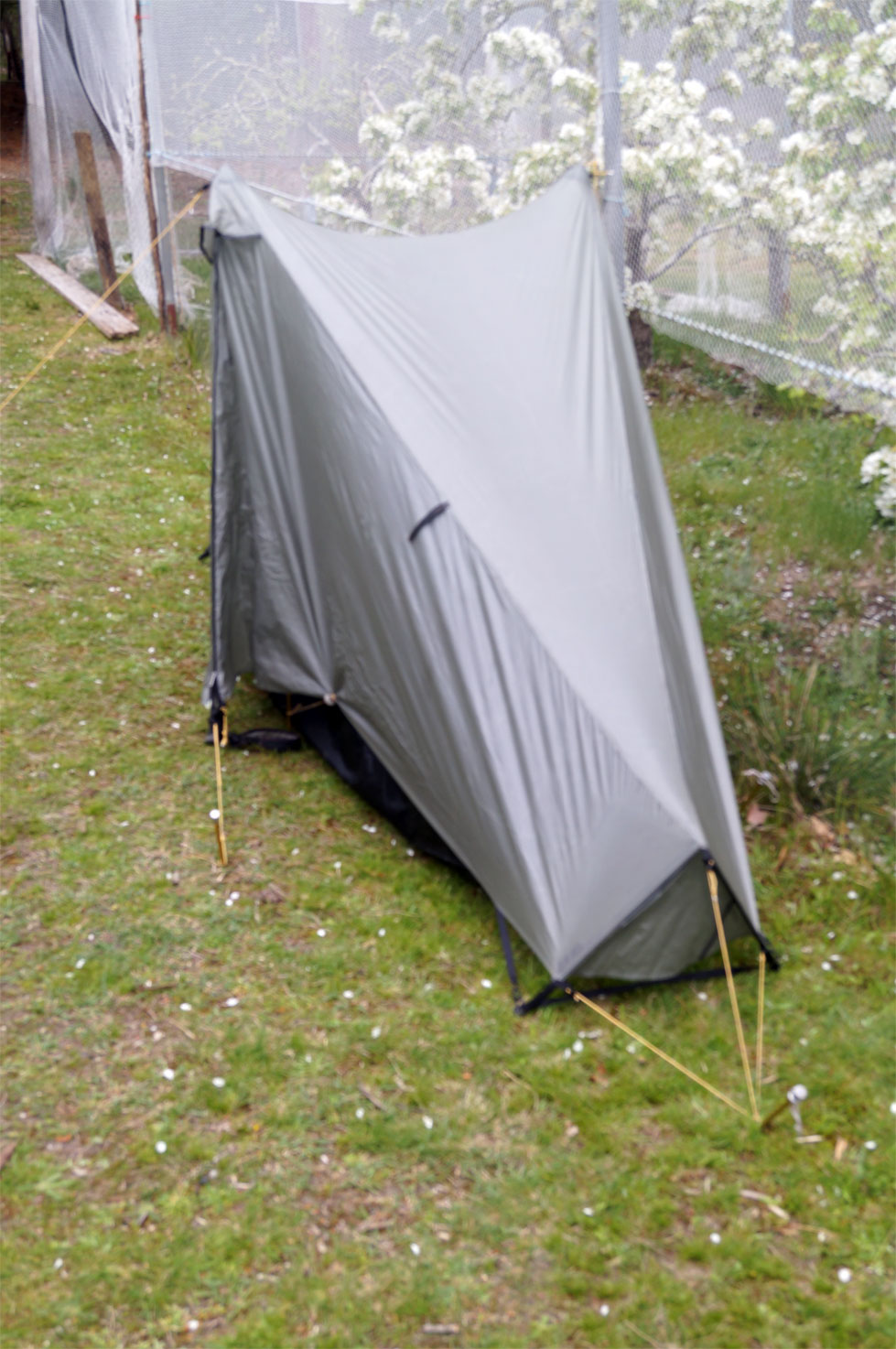Topic
How big to cut a ground sheet for TarpTent Notch?
Forum Posting
A Membership is required to post in the forums. Login or become a member to post in the member forums!
Home › Forums › Gear Forums › Gear (General) › How big to cut a ground sheet for TarpTent Notch?
- This topic has 6 replies, 5 voices, and was last updated 7 years, 2 months ago by
 Tipi Walter.
Tipi Walter.
-
AuthorPosts
-
Oct 7, 2017 at 5:28 pm #3495289
I bought a Notch when I “really wanted” the ProTrail. But . . . I have really been enjoying the Notch. At first I thought it was too big, and lamented that I couldn’t get a ProTrail in time for my hike. But now the ventilation of the Notch is winning me over, even if the overall ‘footprint’ is kind of big for a one person tent (meaning I can’t squeeze into tiny camping spots easily).
Question: when cutting my own ground sheet, how big should it really be? I’ve gone by the old walmart tent guidance that a ground sheet should be slightly smaller than the footprint of the tent, to avoid the rain puddle effect (catching rain which then pools under the tent). However, the TarpTent’s actual tent inner footprint is far smaller than the tarp coverage, so perhaps I actually need to cut a sheet LARGER than the inner tent while still being much smaller than the outer fly area. Right now, I am ending up with dirty sides/edges to the bathtub floor due to the tiny ground sheet I’ve cut.
Thoughts? Anyone else have real experience with this?
Thanks!
Oct 7, 2017 at 10:04 pm #3495325Andrea,
Tarptent’s site lists their optional Tyvek groundsheets for the Notch with the following dimensions:
20 / 42 in x 86 in
I used Tarptent’s Tyvek groundsheet dimensions to cut a polycro groundsheet for our Double Rainbow and found that it worked well.
Oct 7, 2017 at 11:04 pm #3495340It should be sufficiently smaller than the tent floor that rain will never fall on it. Since things can slide around a bit, I’d make it quite a bit smaller. In fact, my preference is to cut W/2 off of each side, where W is the width of the tent floor. :-)
Oct 8, 2017 at 12:27 am #3495350I used to cut them a bit smaller than the floor of the inner (not the tent…)
As for the largish footprint, if you have to it can be set up without either or even both vestibules.



The last photo has the ugly side if set up with the door panels zipped up. You can minimise the flapping (if windy) on the side not in tension by using the mid panel pie outs (if you have) or improvise as I did , in my case I wrapped a small piece of quartz (we are on quartz here…) with some leaves and then used that to make the tie out.
Oct 8, 2017 at 1:38 am #3495368Wow, nice setup. Hadn’t really thought about trying to make it skinny by ‘collapsing’ one of the vestibules.
Oct 8, 2017 at 1:51 am #3495370BTW, the top photo is on uneven and sloping ground.
It can be done, just matter of practice.
The soft look is because I did not notice the camera was set on manual focus.
Oct 8, 2017 at 1:35 pm #3495458Left Field Observation—Ignore if desired—
When you place a ground sheet under the tent there’s always the possibility of getting rain water sandwiched between the ground sheet and the floor of the tent—no matter how big or small the tent footprint is.
Because if it rains hard enough (like the gully washers we get in the NC/TN mountains—and we’re getting today with Hurricane Nate)—all the buckets of water hitting the tent fly have to go somewhere. These rain water hits the tent fly and pours off the fly onto the ground—and then this rain water goes under the tent because a tent always has a high side and a low side.
Point is, with enough rain water your campsite will get ground water—and this water while temporary will move under a tent and get between the ground cloth and the tent floor, creating pools on top of the ground sheet.
My solution is to put my ground cloth inside the tent—for a variety of reasons—including the above.
-
AuthorPosts
- You must be logged in to reply to this topic.
Forum Posting
A Membership is required to post in the forums. Login or become a member to post in the member forums!
Our Community Posts are Moderated
Backpacking Light community posts are moderated and here to foster helpful and positive discussions about lightweight backpacking. Please be mindful of our values and boundaries and review our Community Guidelines prior to posting.
Get the Newsletter
Gear Research & Discovery Tools
- Browse our curated Gear Shop
- See the latest Gear Deals and Sales
- Our Recommendations
- Search for Gear on Sale with the Gear Finder
- Used Gear Swap
- Member Gear Reviews and BPL Gear Review Articles
- Browse by Gear Type or Brand.





